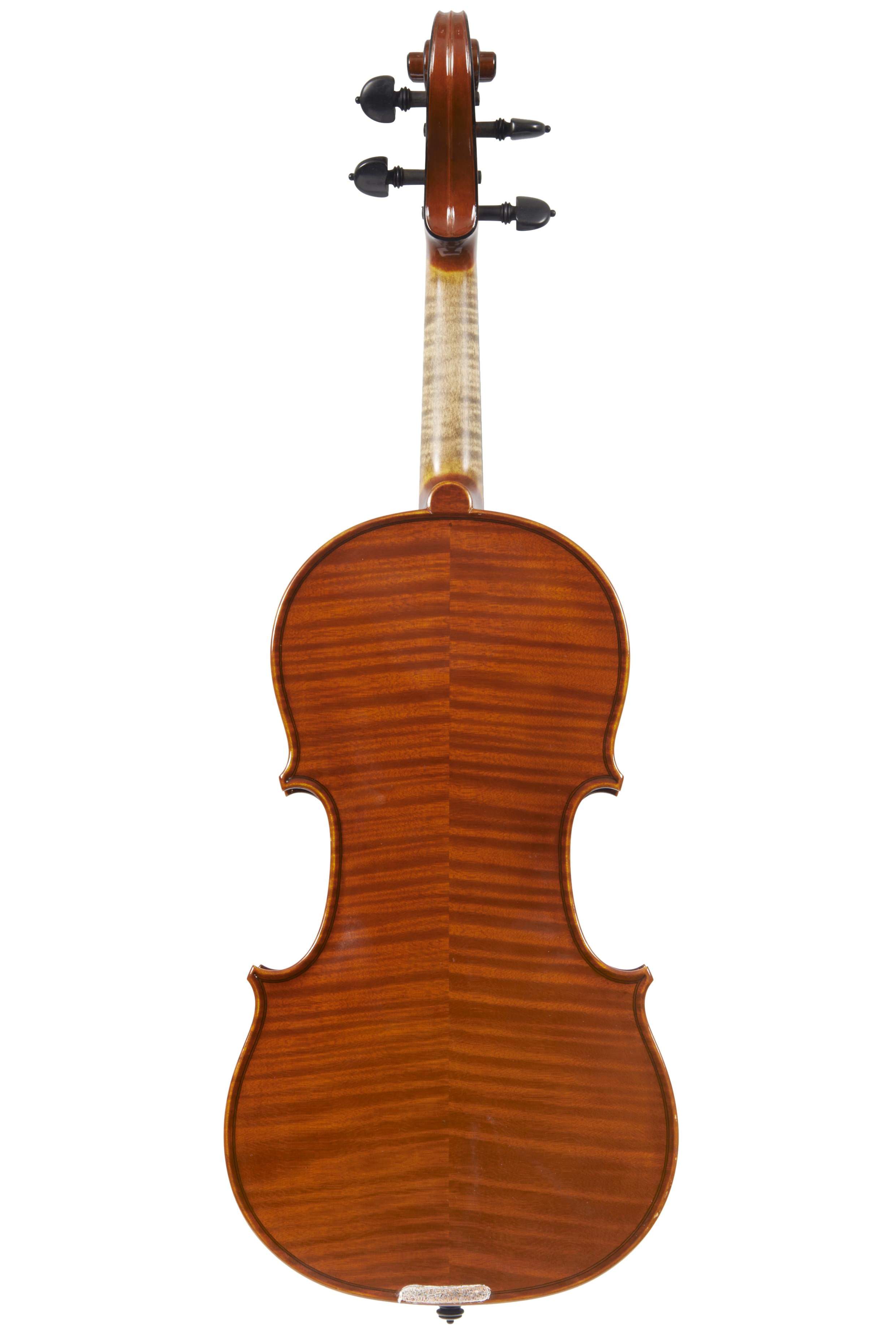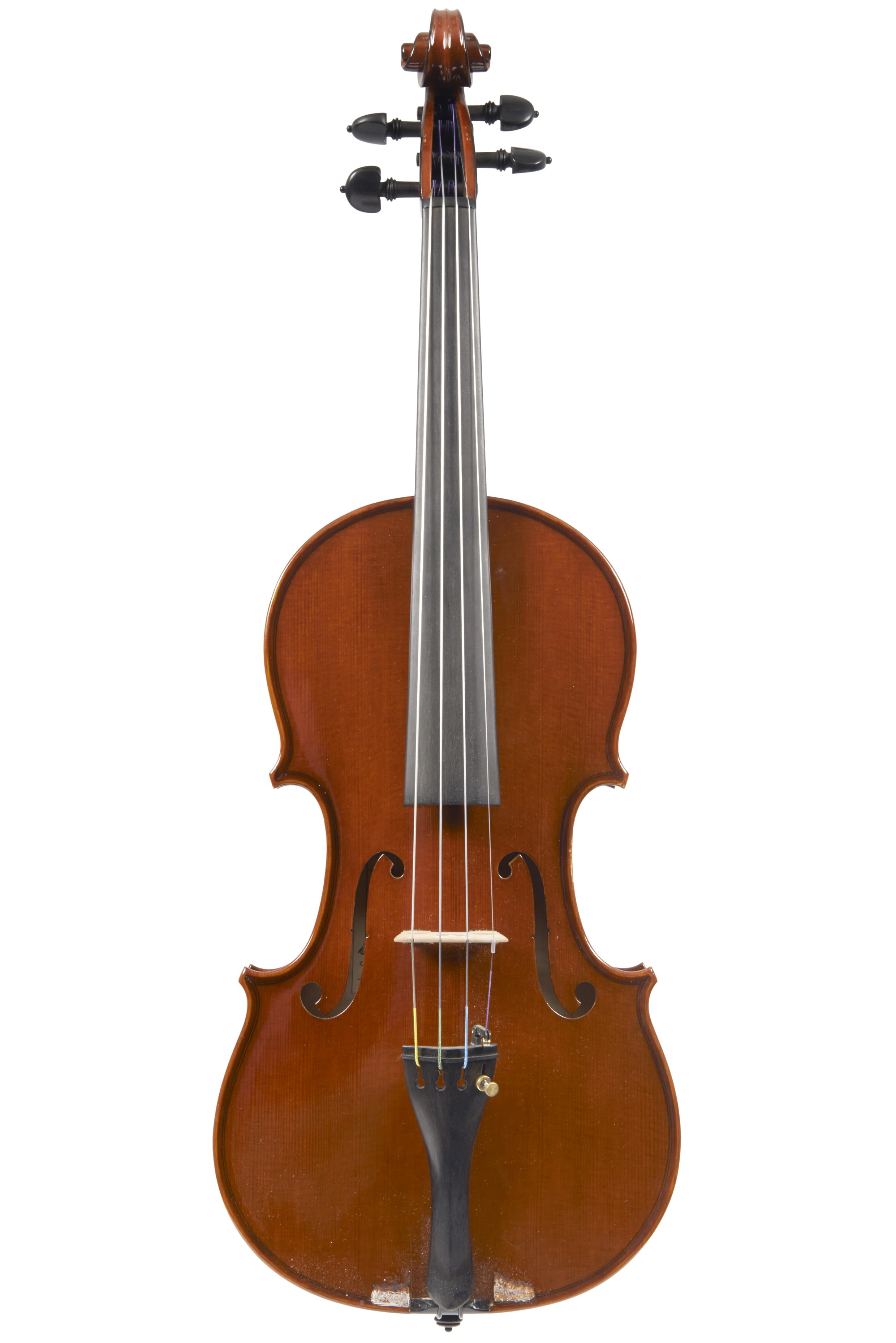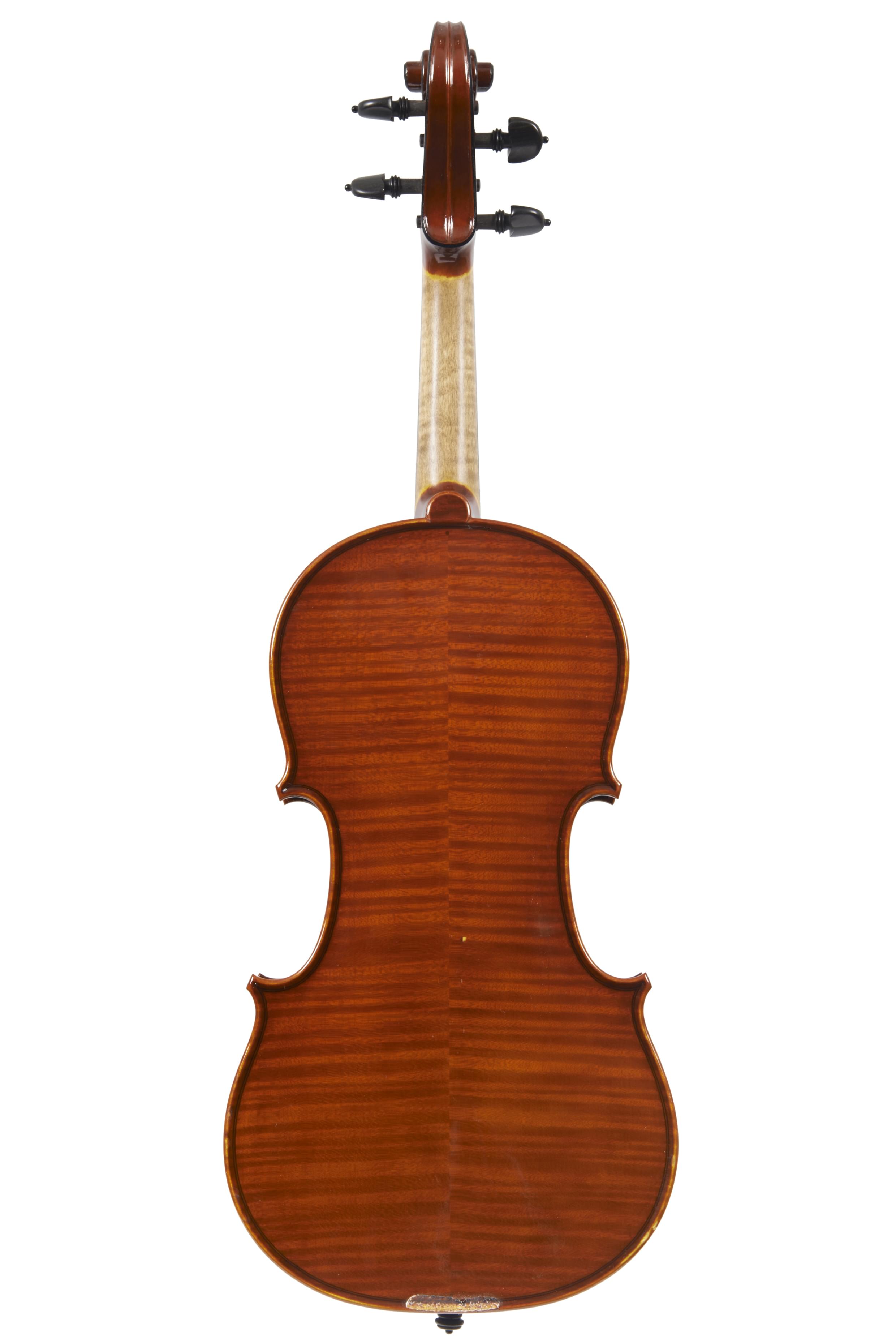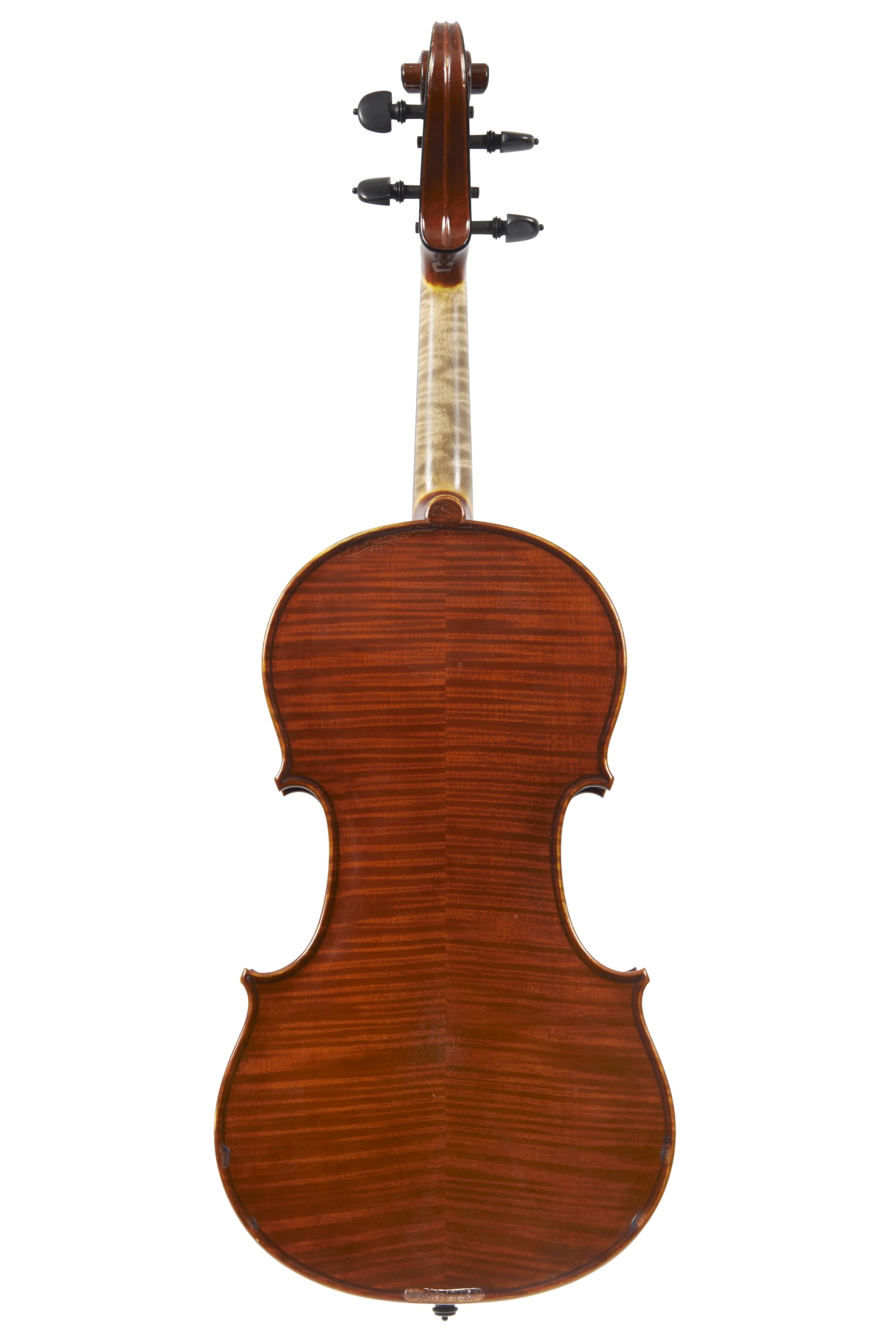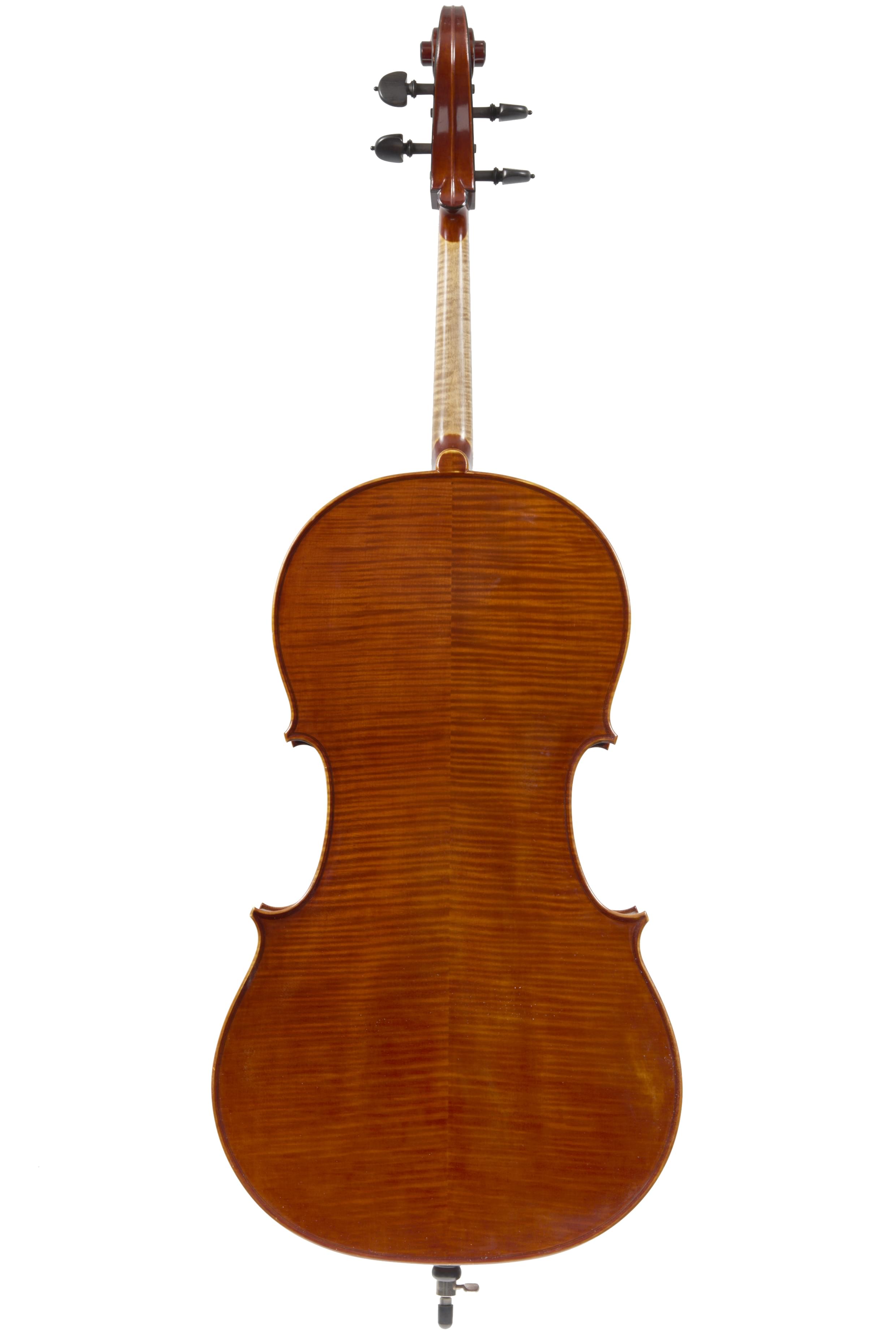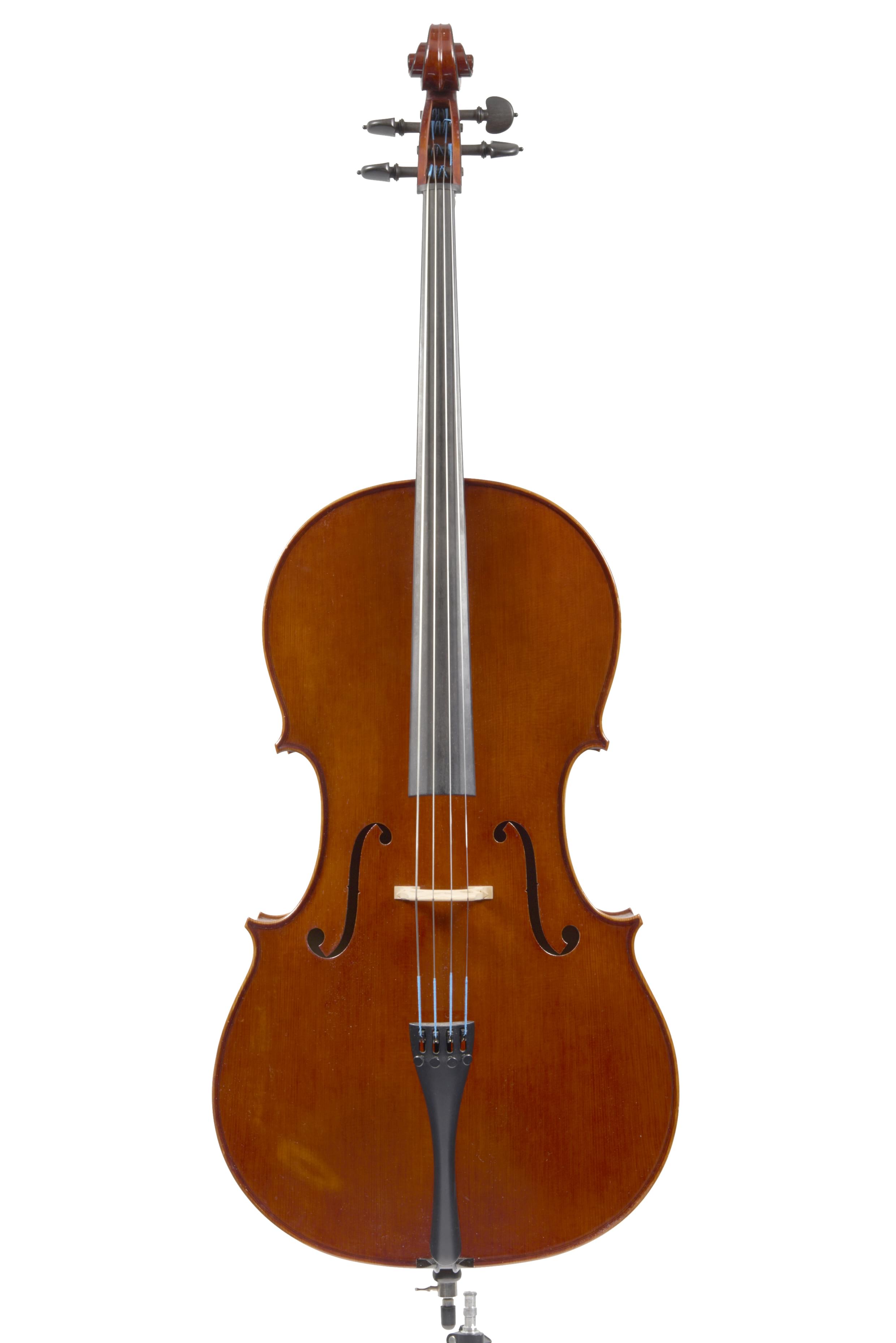A conversation with Maurizio Tadioli
We are delighted to be offering a quartet of instruments made by contemporary Cremonese luthier Maurizio Tadioli in our March auction.
Born in Cremona in 1967, Maurizio Tadioli was introduced to violin making as a child by his maternal grandfather, Carlo Pizzamiglio. Carlo was a prisoner of war in Egypt during the Second World War, and it was during his interment that he taught himself to make violins using wood and tools at his disposal. Remarkably, he managed to make some 40 instruments whilst held as a prisoner.
As well as learning the secrets of lutherie at his grandfather’s knee (his own father was a mechanic by profession) you could say that it was young Maurizio’s destiny to follow in the great tradition, living as he did in the vicinity of Cremona – the spiritual home of violin making. It was a natural step for young Tadioli to attend the Scuola Internazionale di Liutieria in Cremona, from which he graduated in 1985 with the highest grades.
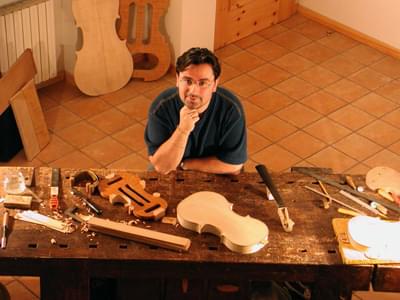
I asked Maurizio what has motivated him in his work during the thirty years since he graduated, and he speaks at once with intense passion: “I’m fascinated by the relationship between different models and sound. With a genius like Guarneri del Gèsu, for example, you see an incredible freedom of form, but it’s backed up by rigour. When you study an instrument like his ‘Cannon’ model you see that everything has been planned around sound; from the preparation of wood, to the quality of ground and all the tiny final details. In fact, you discern that, acoustically speaking, ground is much more important than varnish. I think it is the pursuit of shape and sound that has sustained me.”
And has he developed a good instinct for what a violin will sound like just by looking at it? “Of course. You know what quality of timbre different models will give you. I start with the sound the musician is looking for and once I know that I’ll be led to the right model. If the client wants a powerful, deep timbre, I’ll use a model like the del Gèsu Cannon, whist I might use a Stradivari copy for a brighter, more penetrating tone.”
It’s clear that Tadioli has a deep respect for tradition but I’m interested to know how he feels about a slavish reverence for the past. Where does he stand on the controversial topic of antiquing, for example? Some purists think new instruments should be honestly ‘fresh’, whilst others see artistic ageing as an homage to the violin’s heritage.
"I start with the sound the musician is looking for and once I know that I’ll be led to the right model."
“It’s so easy to tell a fake these days that there’s no question that antiquing is related to fakery,” he tells me. Again, Tadioli links it to sound. “Tastes differ over time and from place to place. Once, there was a general hunger for a clean, glass-like sound and finish, but that taste has changed. Musicians now cherish a richer, more textured and characterful sound. What’s more, clients from different countries want different things. Many asian clients have a stronger taste for antiqued looking violins compared to their European counterparts.”
Does he ever feel the pressure of being part of the Cremonese tradition? The luthier says that it’s unavoidable. The ghosts of the great makers are always there. “Cremona has become a byword for quality, but over the years some very poor quality instruments have claimed the glory of being made in Cremona. The challenge of being a Cremonese luthier now is to keep the flame of quality alight. It’s about honouring the tradition and taking it forward.”
But in a craft that continually harks back to a Golden Age and its guarded secrets, will violin making move with the times? Tadioli, who proudly uses traditional tools, takes a thoughtful approach. “A violin is the result of various processes, and the luthier leaves his fingerprints all over an instrument. In general instruments are better looked after now than they once were. Musician’s use cases, they take more care. The overall result is that violins are ageing less quickly and lasting longer than ever before. I hope my instruments will be around in 100 or 300 years time. But I’m not complacent. I am always searching, reading, learning. There is always something new to learn. With this art you never reach an endpoint – it’s a continual journey.”
I wonder about the possibilities of new technology in this respect. Does cutting-edge science have anything to offer the profession? The most interesting area in this respect Tadioli believes to be acoustic physics. “This is a genuinely interesting field. There are now ways of analysing the acoustic properties of wood which are genuinely revelatory. They are unlocking the dynamics of wood and vibration. Anything that develops the potential of an instrument’s sound can only be a good thing in my book. Having said that, our profession will always be an art rather than a science.”
"When it came to the viola, of course I had no Guarneri del Gèsu to copy...The final piece had a 41cm. back, and I was delighted when it produced a distinctly sweet Guarneri del Gèsu sound. It worked!"
And what of the quartet? The four instruments we are offering in our March 2015 Auction were made in 1990, each one after an Antonio Stradivari personalizzato. Does he approach the making of a quartet with a certain mentality? “Of course.” And once again it’s all about sound. “This quartet is based on a typical Stradivari sonority because that was the commission. I have also made a Del Gèsu quartet for a Japanese client. That was an fascinating job. The violins were modelled on the 1741 and 1742 del Gèsu instruments, and I had the 1731 cello to copy. When it came to the viola, of course I had no Guarneri del Gèsu to copy. I had to use my imagination and modelled it on a violin. The final piece had a 41cm. back, and I was delighted when it produced a distinctly sweet Guarneri del Gèsu sound. It worked!”
Whilst Tadioli’s principal skill is to produce certain sound for his clients, he concedes that clients have very different requirements. For example, Tadioli was commissioned by a Chinese client to create some decorated Amati copies with gold latin script boldly embellishing their ribs. The resulting instruments are striking, if slightly florid showcase items. “Typical of current Chinese tastes,” he observes. “Different markets have their own natures.”
Maurizio’s list of awards is long and impressive (see his website) and he has won various medals for his work, including a Gagnacavello Concorso Giovani Liutai gold medal. A baroque violin by Maruizio Tadioli which was made in 1984 is now exhibited at the museum of the International Violin Making School in Cremona, which means he has already become part of the Cremona tradition he was so enamoured with as a child. Driven by passion, his workshop in Cortetano, a small village near Cremona, is described on Tadioli’s website as “a natural meeting place for both musicians and luthiers from around the world.” It strikes me that a collegiate feeling, that of belonging and being connected to a like-minded community, is important for this luthier.
And what about where it all began? I’m keen to know if Maurizio Tadioli possesses any of his grandfather Carlo’s violins. “Yes! I bought two of them at auction! Because of the conditions in which they were made, you can see the poor quality of the wood. But of course I am very proud of them.” The passion in Tadioli’s voice seems typical for a man obsessed with looking both forward to new skills and back to the the secrets of the past. This Cremonese luthier’s journey continues.
Recent Posts
Categories
- Feature Type
- Instrument Type
-
Maker
- Albani, Mathias (2)
- Amati, Andrea (8)
- Amati, Antonio & Girolamo (6)
- Amati, Girolamo II (6)
- Amati, Nicolò (6)
- Balestrieri, Tommaso (3)
- Banks, Benjamin (1)
- Bazin, Charles Nicolas (1)
- Bergonzi Family (1)
- Bergonzi, Carlo (2)
- Bergonzi, Michele Angelo (2)
- Bernardel, Auguste Sébastien Philippe (2)
- Bisiach, Leandro (2)
- Bultitude, Arthur Richard (1)
- Bussetto, Giovanni Maria del (1)
- Camilli, Camillo (2)
- Cappa, Gioffredo (2)
- Carcassi, Lorenzo & Tomaso (1)
- Ceruti, Giovanni Battista (3)
- Chanot, George Adolph (1)
- Cuypers, Johannes Theodorus (1)
- Dalla Costa, Pietro Antonio (1)
- Deconet, Michele (1)
- Fendt, Bernard Simon II (1)
- Fendt, Bernhard Simon I (1)
- Gabrielli, Giovanni Battista (1)
- Gagliano, Alessandro (2)
- Gagliano, Ferdinando (1)
- Genova, Giovanni Battista (1)
- Gisalberti, Andrea (1)
- Goffriller, Francesco (1)
- Goffriller, Matteo (1)
- Grancino, Giovanni (4)
- Grancino, Giovanni Battista II (1)
- Guadagnini, Gaetano II (1)
- Guadagnini, Giovanni Battista (7)
- Guarneri 'filius Andreæ', Giuseppe (3)
- Guarneri del Gesù, Giuseppe (5)
- Guarneri of Mantua, Pietro Giovanni (2)
- Guarneri of Venice, Pietro (3)
- Guarneri, Andrea (3)
- Götz, Conrad (1)
- Hill & Sons, W.E. (1)
- Kennedy, Thomas (1)
- Knopf, Carl Heinrich (1)
- Landolfi, Carlo Ferdinando (1)
- Lott, John Frederick (1)
- Lupot, Nicolas (2)
- Mantegazza, Pietro Giovanni (2)
- Mariani, Antonio (1)
- Montagnana, Domenico (2)
- Panormo, Vincenzo Trusiano (1)
- Parker, Daniel (1)
- Peccatte, Dominique (1)
- Platner, Michele (1)
- Pressenda, Giovanni Francesco (1)
- Rayman, Jacob (1)
- Retford, William Charles (1)
- Rivolta, Giacomo (1)
- Rocca, Giuseppe Antonio (2)
- Rota, Giovanni (1)
- Rugeri, Francesco (3)
- Sartory, Eugène (1)
- Scarampella, Stefano (2)
- Schwartz, George Frédéric (1)
- Serafin, Santo (1)
- Sgarabotto, Gaetano (1)
- Sgarabotto, Pietro (1)
- Simon, Pierre (1)
- Stainer, Jacob (3)
- Storioni, Lorenzo (3)
- Stradivari, Antonio (14)
- Stradivari, Francesco (1)
- Stradivari, Omobono (1)
- Tadioli, Maurizio (1)
- Taylor, Michael (1)
- Tecchler, David (2)
- Testore, Carlo Giuseppe (1)
- Tourte, François Xavier (4)
- Tubbs, James (1)
- Voller Brothers (1)
- Vuillaume, Jean-Baptiste (10)
- Watson, William (1)
- da Salò Bertolotti, Gasparo (2)
- Author
- Charity
-
In the Press
- Antiques Trade Gazette (3)
- Archi-magazine.it (1)
- Art Daily (2)
- CNN Style (1)
- Classic FM (2)
- ITV (1)
- Ingles & Hayday (4)
- Liberation (1)
- Life Style Journal (1)
- London Evening Standard (1)
- Paul Fraser Collectibles (1)
- Rhinegold Publishing (1)
- Sotheby's (1)
- Strings Magazine (2)
- Tarisio (2)
- The Fine Art Post (1)
- The Strad (7)
- The Times (1)

